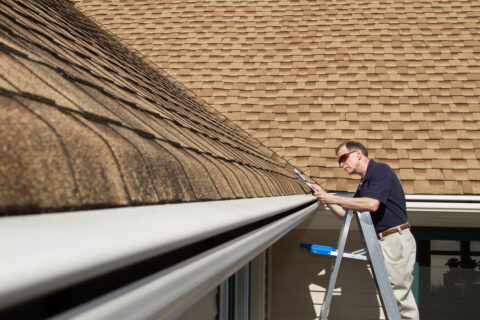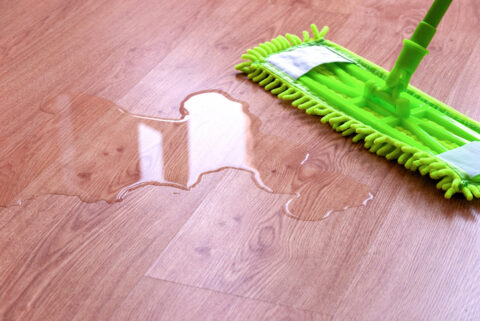
Here are some practical tips to help you protect your house from major water damage.
Be Vigilant
One of the most important steps you can take to protect your home is to be vigilant for signs of water damage. This can include:
- Wet or musty smell
- Discolored drywall or plaster
- Sagging drywall or plaster
- Blistering or peeling paint
- Mold growth
Take immediate action when you detect these signs. Water damage is progressive: the longer it’s left untreated, the worse it gets. You also don’t know how much damage there might be behind the surface of the wall – water might have been leaking for weeks inside the wall before it became visible.
Check Your Plumbing
Indoor plumbing is an incredible convenience, but it’s also a potential risk for water damage. Your pipes carry water every day, but over time they can develop leaks, either because of physical damage, chemical decay, or poor workmanship.
A major break in a pipe can cause the release of so much water that it can flood your home. You will notice these major breaks. However, unless you look, you might not notice a smaller leak that can actually cause more serious water damage to your home over time.
To find these small leaks, take the time to inspect your plumbing a couple of times a year. Starting at your cutoff valve, which can stop the water supply to your home, perform a quick inspection of all your pipes to every appliance and spigot in the house. Where the pipes are visible, look for water or corrosion. Where the pipes aren’t visible, look for signs of water damage.
Check Your Roof

To avoid this water damage, inspect your roof at least twice a year. Inspect it once under dry conditions, looking for signs of water damage and rot. Then inspect it during or immediately after a heavy rainstorm, looking for dripping water or wet wood.
Control Water around Sinks, Baths, and Showers
Another potential source of major water damage in your home is common spills from sinks, baths, and showers. Some spills are inevitable whenever you are using these fixtures, especially when kids use them.
Take steps to control these spills. Sometimes, this might be as simple as having a bathmat outside the shower. Other times, you might need to put down additional towels to absorb water and keep it from penetrating the floor and walls. Also make sure that your bath curtains or shower doors are adequate to keep water in.
Replace Caulking and Grout
Another important way to make sure your fixtures aren’t causing water damage is to make sure your caulking and grout create a strong seal, keeping water out. When you are checking your plumbing and reach a fixture like a shower or sink, check all the caulking and grout around that fixture.
Caulk creates an important seal around your tub or shower. Properly applied caulk is long-lasting but will likely need to be replaced every five years. Look for places where the caulk is shrinking, degenerating, or detached. If you find areas where the caulk is coming apart, replace the entire line of caulk – this is more effective than just replacing the damaged caulk and trying to merge new and old caulk.
Grout seals between bathroom tiles. It can last much longer than caulk. Properly applied grout can block water for 15-20 years. However, it’s also important to make sure the grout is properly waterproofed. Grout treated with an impregnating sealant can remain waterproof for its lifetime. However, if your grout is treated with a surface sealant, this should be reapplied every three years or so.
Clean Spills Quickly

If you have a large water spill that causes water to soak into areas where you can’t see, keep a watch for signs of water damage, such as mold growth or damage to the drywall or paint. Significant water damage can occur because of either a single large spill or repeated small spills.
Help with Water Damage in your area
If your house suffered water damage in your area, your local FLEET company can help. We’ve been the leading water damage restoration company in the area since 1954. We offer 24/7 emergency response services to help you with your water damage. We can arrive quickly and begin work immediately.
your local FLEET company can handle every step of the water damage restoration process, including tracking down and fixing a water leak, tearing out damaged structures, and replacing them with sturdy and secure new structures. We utilize the latest and most advanced best practices in the industry to give you great results. We can even handle the finishing work so no one will be able to tell where the water damage occurred.
Not all water damage is covered by insurance. If, for example, you haven’t been performing inspections of your roof and plumbing, and a leak has been causing damage for years, it might not be covered. However, your local FLEET company can work with your insurance company, providing full documentation of the damage and the repairs so that you can get full compensation for the repairs covered under the terms of your policy.
For help with your water damage, please contact us at 844-967-4911 today. your local FLEET company serves customers in your area.
